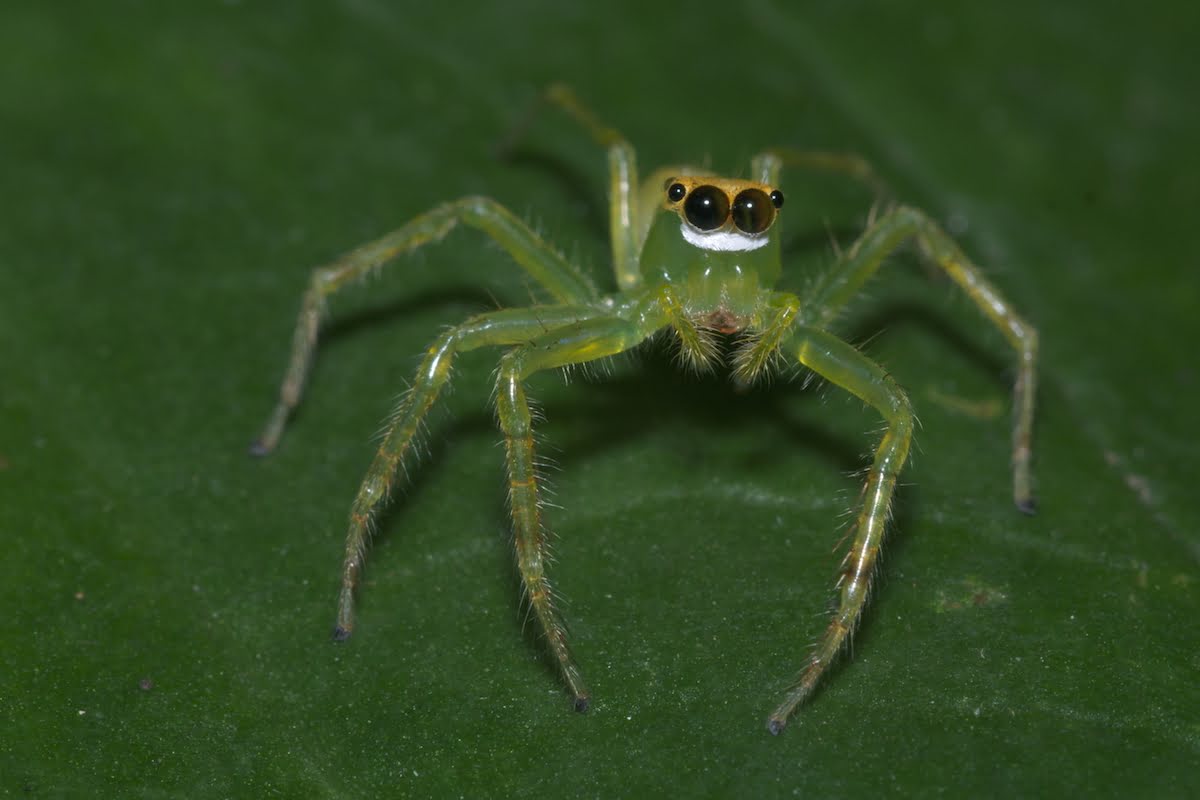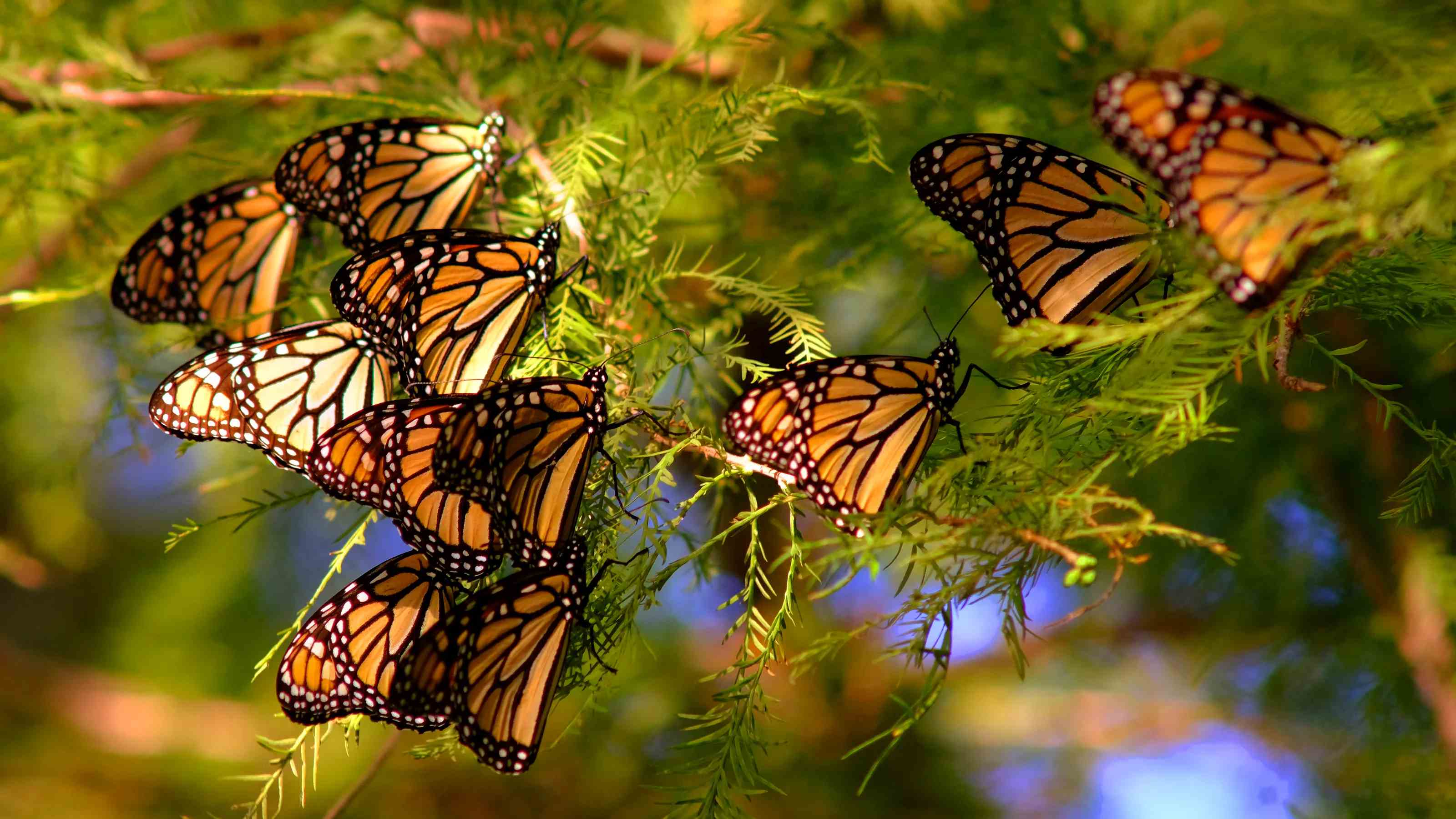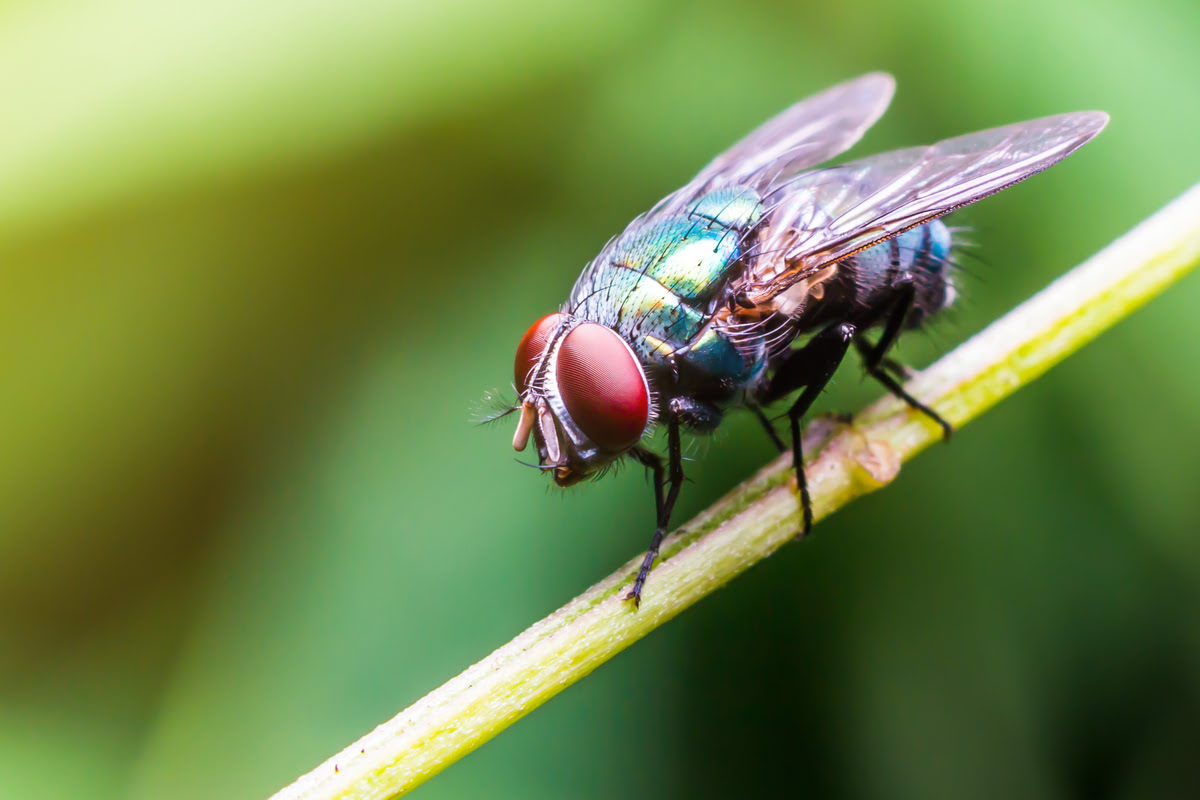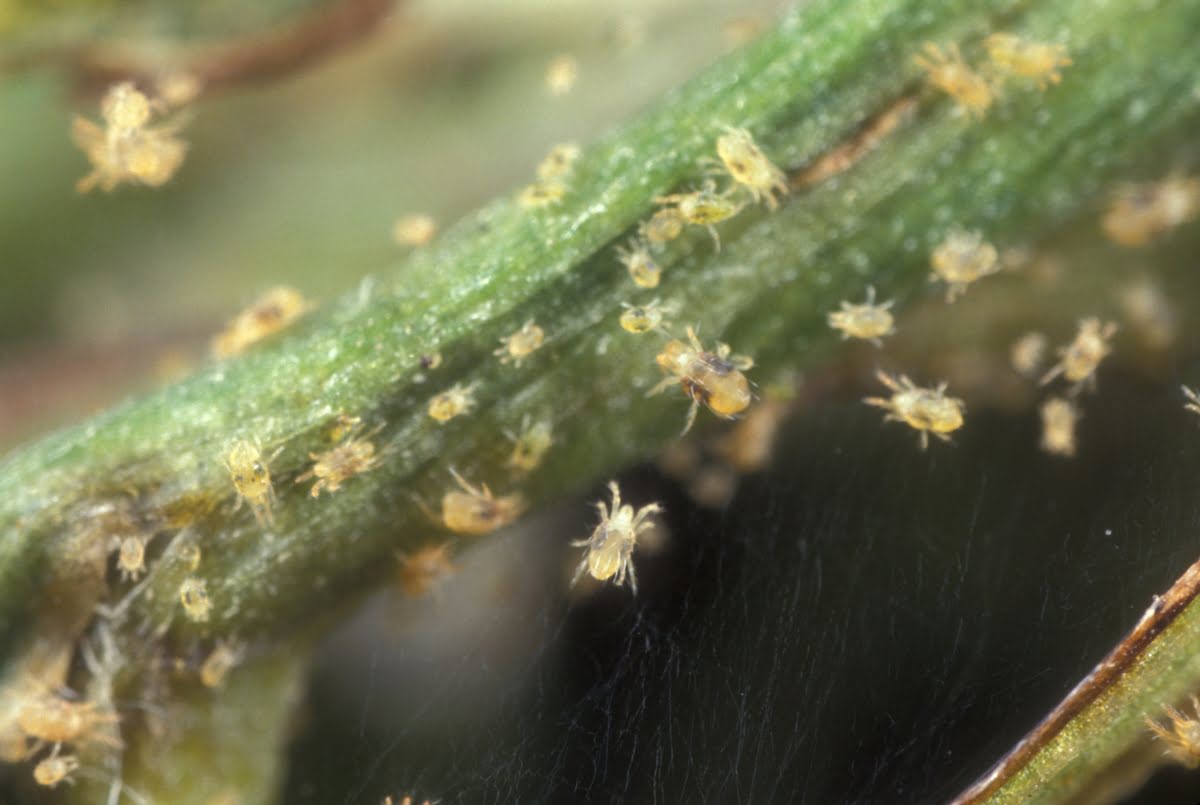Home>Gardening News and Trends>Latest News>Spiders And Insects Belong To Which Of These Animal Categories


Latest News
Spiders And Insects Belong To Which Of These Animal Categories
Published: December 9, 2023
Discover the latest news about the animal categories to which spiders and insects belong. Stay informed with updated information and fascinating insights.
(Many of the links in this article redirect to a specific reviewed product. Your purchase of these products through affiliate links helps to generate commission for Chicagolandgardening.com, at no extra cost. Learn more)
Table of Contents
Introduction
Welcome to the fascinating world of arthropods! In the animal kingdom, spiders and insects are two incredibly diverse and abundant groups that have captured the attention of scientists and nature enthusiasts alike. These creatures can be found in almost every corner of our planet, from the deepest oceans to the highest mountains.
Before we delve into the specific categories that spiders and insects belong to, let’s first understand what these categories are. In the animal classification system, all living organisms are grouped into various categories based on their shared characteristics. These categories, known as taxonomic ranks, allow scientists to organize and study the vast array of species found on Earth.
Spiders, with their eight legs and unique web-spinning abilities, belong to the class Arachnida. This class includes other arachnids such as scorpions and ticks. Insects, on the other hand, belong to the class Insecta, which is the largest class within the phylum Arthropoda. With more than a million known species, insects are incredibly diverse in shape, size, and behavior.
Now that we have a basic understanding of the animal categories, let’s explore the characteristics that distinguish spiders from insects. Spiders, characterized by their two body segments (cephalothorax and abdomen) and their ability to produce silk, are fascinating creatures that play crucial roles in regulating insect populations and maintaining ecosystem balance.
However, insects are also remarkable creatures with their own unique set of features. They typically have three body segments (head, thorax, and abdomen), six legs, and often possess wings. Insects are incredibly adaptable and can be found in a wide range of habitats, from tropical rainforests to arid deserts.
Understanding the classification of spiders and insects is key in appreciating their significance in the natural world. So, join us as we dive deeper into the intricacies of these fascinating creatures, explore their diverse forms and functions, and uncover the wonders of the world of spiders and insects.
Definition of Animal Categories
In the vast and diverse realm of the animal kingdom, organisms are classified into various categories based on their shared characteristics. These categories, known as taxonomic ranks, provide a systematic approach to understanding the relationships between different species.
The highest taxonomic rank is the kingdom, and animals belong to the kingdom Animalia. Within this kingdom, animals are further divided into different phyla, classes, orders, families, genera, and species. Each taxonomic rank represents a more specific grouping that shares certain common features.
Spiders, fascinating creatures known for their eight legs and ability to produce silk webs, belong to the class Arachnida. This class encompasses a wide range of arachnids, including scorpions, ticks, and mites. Arachnids are characterized by their two main body segments and lack of antennae.
Insects, on the other hand, belong to the class Insecta, which is the largest class within the phylum Arthropoda. Arthropods, including insects, are characterized by their segmented bodies, exoskeletons, jointed limbs, and bilateral symmetry. Insects are further classified into various orders, such as Diptera (flies), Coleoptera (beetles), Lepidoptera (butterflies and moths), and Hymenoptera (bees, wasps, and ants).
These animal categories are defined based on a combination of morphological, anatomical, and genetic characteristics. Scientists study the physical features, DNA, and evolutionary relationships of different species to determine their appropriate taxonomic placement.
It’s important to note that the classification of animals is an ever-evolving field as new discoveries and advancements in scientific methods continue to refine our understanding of species relationships. Furthermore, the categorization of animals is not always straightforward, as there are often debates and revisions within the scientific community.
However, despite the ongoing changes and debates, the classification system provides a valuable framework for organizing and studying the diverse array of animal species on our planet. It helps us uncover the evolutionary history, ecological role, and unique traits of spiders, insects, and other members of the animal kingdom.
Characteristics of Spiders
Spiders, belonging to the class Arachnida, are fascinating creatures that possess a distinct set of characteristics that set them apart from other animals. These unique traits contribute to their adaptability and success in various ecosystems. Let’s explore some of the key characteristics of spiders:
- Eight Legs: One of the most recognizable features of spiders is their eight legs. These legs are attached to the cephalothorax, which is the fused head and thorax region of their body.
- Two Body Segments: Spiders have two main body segments: the cephalothorax, which houses the head, eyes, mouthparts, and legs; and the abdomen, which contains the reproductive organs and the spinnerets used to produce silk.
- Silk Production: Spiders are renowned for their ability to produce silk, which serves a multitude of purposes. They use silk to construct intricate webs for capturing prey, create egg sacs for protecting their offspring, and even use it for shelter and navigation.
- Venomous Fangs: Many spider species possess venomous fangs that they use to immobilize their prey. While some spiders have venom strong enough to pose a threat to humans, the majority of spiders are harmless and play an important role in controlling insect populations.
- Multiple Eyes: Spiders typically have multiple sets of eyes, which vary in number and arrangement depending on the species. These eyes allow them to detect movement and perceive their surroundings, aiding in hunting and predator avoidance.
- Adaptability: Spiders are highly adaptable creatures and can be found in a wide range of terrestrial habitats across the globe. They can thrive in diverse conditions, from deserts and rainforests to mountains and caves.
These characteristics make spiders formidable predators, helping them secure their place in ecosystems as efficient insect hunters. Additionally, their ability to produce silk and construct intricate webs showcases their remarkable engineering skills and evolutionary adaptations.
It’s important to note that spiders exhibit great diversity in terms of size, coloration, habitat preference, and hunting strategies. From the tiny jumping spiders to the large orb-weavers, each species has its own unique set of characteristics that contribute to their success in their respective environments.
By studying the characteristics of spiders, scientists gain insights into the complex adaptations and behaviors that have allowed these arachnids to thrive for millions of years. Moreover, appreciating these creatures helps us cultivate a deeper understanding and respect for the intricate web of life in which spiders play a vital role.
Classification of Spiders
Spiders, belonging to the class Arachnida, are further classified into various orders, families, genera, and species based on their shared characteristics and evolutionary relationships. Let’s take a closer look at the classification of spiders:
- Order Araneae: This is the scientific name for the order that includes all spiders. It is the largest order within the class Arachnida, comprising over 49,000 known species. Spiders in this order share common features such as eight legs, two body segments, and the ability to produce silk.
- Families: Within the order Araneae, spiders are further divided into families. There are numerous spider families, each characterized by specific morphological and behavioral traits. Some well-known spider families include Araneidae (orb-weavers), Salticidae (jumping spiders), and Lycosidae (wolf spiders).
- Genera and Species: Further classification is carried out at the genus and species level. Genera refer to groups of closely related species that share common characteristics. Species, on the other hand, is the most specific taxonomic rank and refers to individual organisms that can interbreed and produce fertile offspring.
It’s worth noting that spider taxonomy is a constantly evolving field, with new species being discovered and existing classifications being refined. Advancements in genetic analysis techniques have played a significant role in uncovering the relationships between different spider species.
Additionally, spiders exhibit a wide range of morphological and behavioral diversity within their classifications. Some spiders are known for their intricately woven orb-shaped webs, while others employ stealth and agility to hunt their prey. Some build trapdoors or burrows, while others roam freely in search of food.
Understanding the classification of spiders helps scientists and researchers organize and study the incredible diversity within the arachnid world. It provides a framework for identifying and categorizing different spider species, enabling a better understanding of their ecological roles, evolutionary relationships, and conservation needs.
As we continue to explore and discover new species, our understanding of spider taxonomy will expand, shedding light on the complex and marvelous adaptations that these creatures have developed over millions of years.
Characteristics of Insects
Insects, belonging to the class Insecta, are some of the most diverse and abundant creatures on Earth. They display a wide range of characteristics that have contributed to their remarkable success and adaptation to various habitats. Let’s explore some of the key characteristics of insects:
- Three Body Segments: Insects typically have three main body segments: the head, thorax, and abdomen. The head contains sensory organs, such as eyes, antennae, and mouthparts. The thorax is responsible for locomotion, housing the wings and legs. The abdomen is where the digestive, reproductive, and respiratory systems are located.
- Six Legs: Most insects have six legs attached to their thorax. These legs play a vital role in their movement, allowing them to walk, run, jump, and swim.
- Exoskeleton: Insects are characterized by their exoskeleton, a hard and protective outer covering made of a substance called chitin. This exoskeleton provides support, protection, and serves as attachment sites for muscles.
- Wings: Many insect species possess wings, allowing them to fly or glide through the air. Wings come in various forms, including membranous wings and hardened forewings called elytra in beetles.
- Metamorphosis: Insects undergo a remarkable process called metamorphosis, transforming from one life stage to another. This can occur in two forms: incomplete metamorphosis, where the young, called nymphs, resemble miniature adults but lack wings, and complete metamorphosis, where the young, called larvae or caterpillars, differ greatly in appearance from the adult forms.
- Wide Variety of Feeding Habits: Insects exhibit diverse feeding habits. Some are herbivorous, feeding on plant material, while others are carnivorous, preying on other insects or small animals. There are also omnivorous insects that consume both plant and animal matter.
The characteristics of insects contribute to their incredible adaptability and success in virtually every terrestrial and freshwater habitat. From the rainforests to the deserts, from the depths of the oceans to the highest mountain peaks, insects are found in abundance, playing essential roles in their respective ecosystems.
It’s important to note that insects are incredibly diverse, with over a million known species and many more yet to be discovered and classified. This immense diversity allows them to occupy a wide range of ecological niches and contribute to various ecological processes, including pollination, decomposition, and nutrient cycling.
Studying and understanding the characteristics of insects is crucial for scientists and researchers in fields such as entomology and ecology. By unraveling their unique adaptations, behavior, and ecological interactions, we gain valuable insights into the complex and interconnected world of insects, contributing to our knowledge of biodiversity and the functioning of ecosystems.
Classification of Insects
Insects, belonging to the class Insecta, are an incredibly diverse and abundant group of animals. They are further classified into various orders, families, genera, and species based on shared characteristics and evolutionary relationships. Let’s take a closer look at the classification of insects:
- Class Insecta: Insects belong to the class Insecta, which is the largest class within the phylum Arthropoda. They are characterized by their three main body segments (head, thorax, and abdomen), six legs, and usually possess wings at some stage of their life cycle.
- Orders: Insects are divided into numerous orders, each representing a distinct group with specific characteristics. Some well-known insect orders include Diptera (flies), Coleoptera (beetles), Lepidoptera (butterflies and moths), Hymenoptera (bees, wasps, and ants), and Hemiptera (true bugs).
- Families: Within each order, insects are further classified into families. These family groups exhibit more specific characteristics and often share similar ecological roles and behaviors. For example, within the order Hymenoptera, there are multiple families such as Apidae (bees), Vespidae (wasps), and Formicidae (ants).
- Genera and Species: Further classification is carried out at the genus and species level. Genera represent groups of closely related species, while species is the most specific taxonomic rank and refers to individual organisms that can interbreed and produce fertile offspring.
The classification of insects is a dynamic and ongoing field, as new species are constantly being discovered, and advancements in genetic analysis provide insights into their evolutionary relationships. DNA sequencing techniques have played a significant role in refining and reclassifying certain insect groups.
It’s important to note that the immense diversity of insects poses challenges in accurately classifying and identifying all species. Some groups, such as beetles, have a vast number of species, and there may still be many undiscovered insects awaiting scientific description.
Understanding the classification of insects is crucial for scientists and researchers studying their ecology, behavior, and evolution. It provides a framework for organizing and categorizing different insect species, helping to uncover patterns, relationships, and connections within the vast insect world.
By delving into the classification of insects, we gain valuable insights into the incredible diversity of terrestrial life and develop a deeper appreciation for the important roles these creatures play in ecosystems and our own lives.
Comparison between Spiders and Insects
Spiders and insects are both fascinating groups of arthropods with remarkable adaptations and diverse ecological roles. While they may share some similarities, there are also significant differences that set them apart. Let’s compare spiders and insects:
- Body Segmentation: Spiders have two main body segments (cephalothorax and abdomen), while insects have three (head, thorax, and abdomen). This difference in body segmentation reflects their distinct evolutionary paths.
- Legs: Spiders have eight legs, while insects generally have six legs. The number and structure of legs play a crucial role in their movement and the ways they interact with their environment.
- Wings: Most insects have wings or at least the ability to develop them at some point in their life cycle, enabling them to fly or glide. Spiders, on the other hand, lack wings and rely on their other adaptations, such as silk production, to navigate and capture prey.
- Feeding Techniques: Spiders are primarily predators, feeding on other insects and small animals that they catch in their webs or ambush. In contrast, insects display a wide variety of feeding habits, including herbivory, carnivory, and omnivory.
- Metamorphosis: Insects undergo a process called metamorphosis, which involves a dramatic change in body form as they progress through different life stages. Spiders, on the other hand, do not undergo a significant metamorphosis, instead gradually growing and maturing.
- Silk Production: While both spiders and some insects produce silk-like substances, spiders are renowned for their ability to produce strong and intricate silk webs for hunting and other purposes. In contrast, insect silk is typically used for different functions, such as constructing cocoons and creating attachment structures.
- Social Behavior: Some insects, such as bees and ants, exhibit complex social behaviors, living in large colonies with specialized roles for different individuals. Spiders, on the other hand, are primarily solitary creatures, with limited social interactions.
These comparisons highlight the distinct adaptations and lifestyles of spiders and insects. While both groups play important roles in ecosystems, their differences in body structure, feeding habits, and behavior reflect their diverse evolutionary histories and ecological niches.
It’s important to recognize that these comparisons are generalizations, and there are exceptions within both spiders and insects. The incredible diversity within each group means that there are variations in their characteristics and behaviors across different species and even within the same species.
By studying and understanding the similarities and differences between spiders and insects, scientists gain insights into the complexities of arthropod biology and the ways in which these remarkable creatures have diversified and thrived in Earth’s ecosystems.
Conclusion
Spiders and insects, as members of the animal kingdom, captivate us with their incredible diversity, unique adaptations, and essential ecological roles. While spiders belong to the class Arachnida and insects to the class Insecta, they exhibit distinct characteristics and occupy different ecological niches.
Spiders, with their eight legs, silk production, and venomous fangs, are adept predators that play a vital role in controlling insect populations. Insects, on the other hand, with their three body segments, diverse feeding habits, and metamorphic life cycles, have become one of the most abundant and successful groups of organisms on Earth.
The classification of spiders and insects provides a framework for scientists to organize and study the vast array of species within these groups. It helps uncover the evolutionary relationships and understand the unique adaptations that have allowed these creatures to thrive in various habitats and ecological interactions.
Comparing spiders and insects reveals the differences in body structure, leg count, feeding habits, and social behavior between the two groups. Spiders rely on silk production and intricate webs to capture prey, while insects display a wide range of feeding habits and some species have complex social structures.
Understanding both the similarities and differences between spiders and insects allows us to appreciate the intricacies of the natural world. It emphasizes the importance of maintaining biodiversity and preserving these remarkable creatures and their habitats.
As we continue to explore and study spiders and insects, let us not forget the wonders they bring to our ecosystems. These tiny creatures, with their delicate silk threads, intricate wings, and impressive adaptations, contribute to the balance and beauty of the natural world.
So, let us continue to marvel at the intricate webs of spiders, the captivating flight of butterflies, and the industrious societies of ants. May our understanding and appreciation for spiders and insects ignite a sense of wonder and respect for the incredible diversity of life on our planet.









